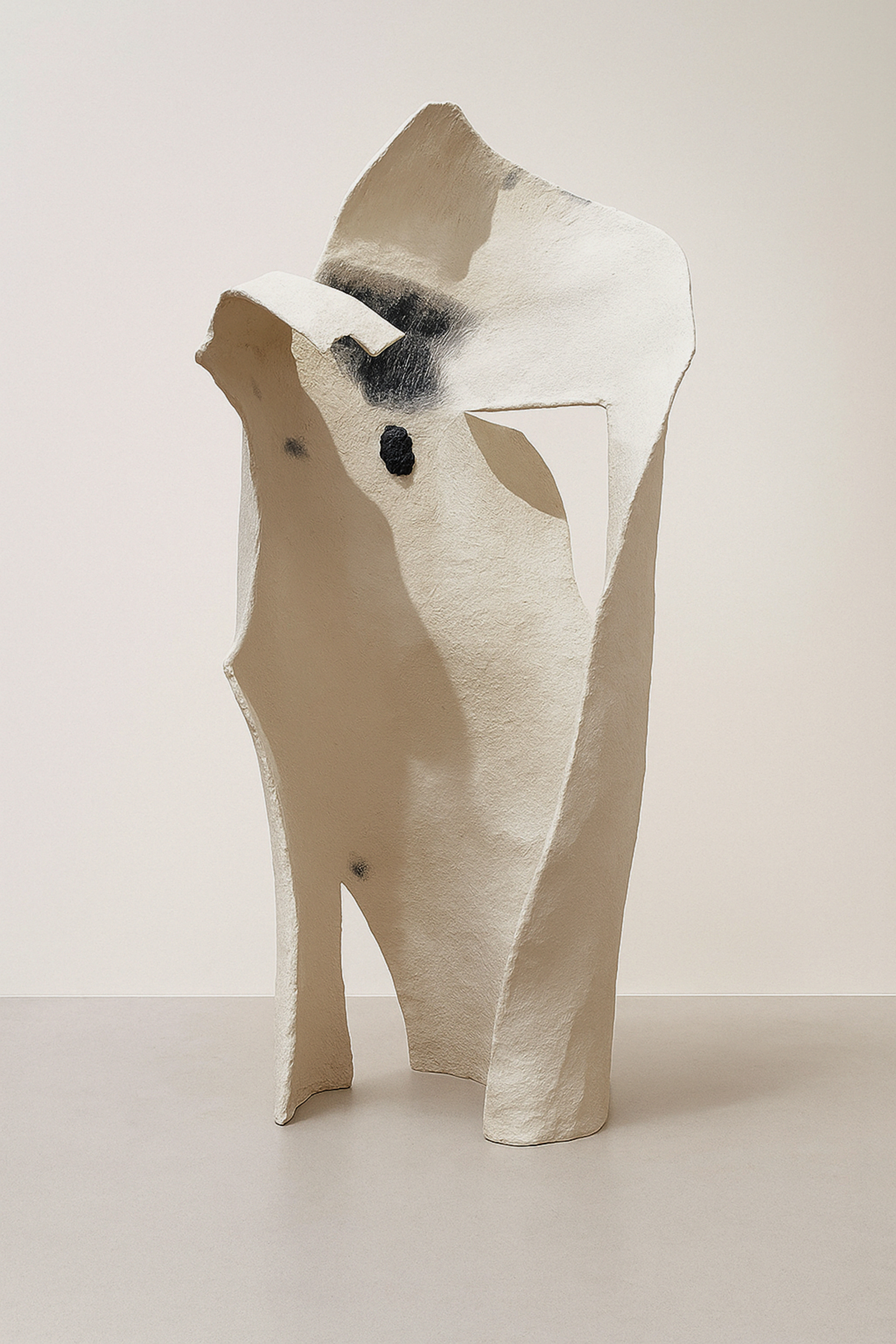Yu Jihye
Ear, 2022
Mixed media
100 x 170 x 50 cm
Unique work
Certificate of authenticity included
US$11,000
Show your appreciation with a like
Purchasing opens early August 2025. Be the first to know!
Want a reminder? Join our mailing list.
About the work
- Materials
- Mixed media
- Dimensions
- 100 x 170 x 50 cm
- Frame
- Frame not included
- Signature
- Unsigned.
- Certificate Of Authenticity
- Certificate included
Yu Jihye’s sculptural work Ear gives form to a sensation that arrives before language—the density of silence, the act of listening without hearing. The structure stands like a folded membrane, at once open and withdrawn, embodying both the will to receive and the choice to remain closed. Though it doesn’t resemble an ear anatomically, its curved silhouette, thin surfaces, and hollowed interior evoke the architecture of listening. Yet within this gesture, there is a rupture—an echo of unheard words, unspoken emotions, and the lingering presence of silence long endured. Scattered black marks across the surface resemble noise or stains of memory, suggesting that this “ear” is not merely a receptor, but a vessel shaped by time, sensitivity, and exhaustion. Ear is both a symbol of perception and of separation. It gestures toward the act of listening, but also carries the fatigue of having heard too much. It occupies a space where words fail to reach—or where they have not yet begun. In this quiet threshold, the ear listens not to speech, but to the trembling of the world itself.
About the artist
Yu Jihye is an artist based in Daejeon, South Korea, whose work begins with an exploration of the sensory and contradictory state that exists before form and meaning fully emerge. Her practice often stems from the materiality of substances and the residual traces of sensation that surround them. She carefully selects organic and imperfect materials such as cotton, paper pulp, and fabric, and sensitively perceives and experiments with their physical and tactile properties. The loosely entangled texture of cotton appears both alive and lifeless, while the hardened forms of paper pulp suggest bodily movements through soft curves or twisted lines. In this way, opposing qualities—softness and strength, vitality and lifelessness—collide and intersect in her work, ultimately forming a new kind of harmony. Rather than suppressing these contradictions, Yu embraces them as a source of life force. The surfaces of her works often appear worn down or partially erased, like the remains of memory, evoking sensations that are neither fully narrated nor restored. Instead of depicting memory as a coherent narrative, she focuses on how it drifts through the body and the senses, how it resurfaces, and how it reorganizes itself into a new sensory order. Her exploration of “contradictory harmony” and the “potential for new vitality” metaphorically reflects the hybrid and artificial nature of contemporary life, revealing complex layers of perception beyond any singular message. These broken or reassembled structures reveal gaps and collisions, yet remain vividly alive—like internal movements refusing to be still. In this way, her work affirms suppressed impulses and embraces chaos, reflecting an artistic stance that generates renewed vitality from the residues of sensation.
